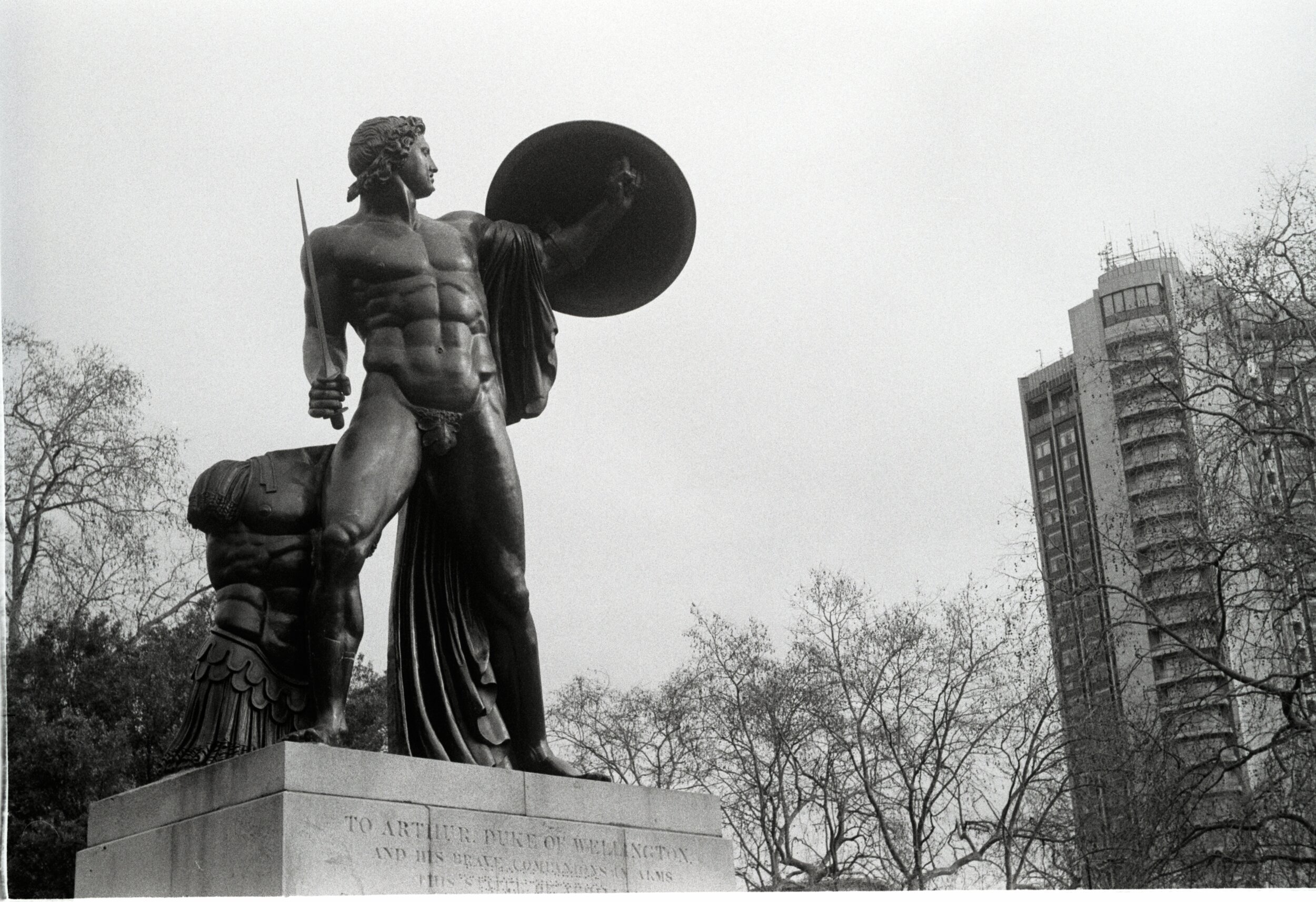
The Achilles Testicle
An ode to a barrister with some balls
Next to Hyde Park Corner is a seemingly rarely visited statue of Achilles. Close to the home of Arthur Wellesley at Apsley House, it celebrates the Duke of Wellington’s victories in the Napoleonic War. The statue itself is ridiculously big; standing at 5.5 metres high and being made of the melted down captured cannon of the French.
Its purpose now appears to have been slightly lost and, when I visited, I was stopped by a gentleman who asked me what it was. When I replied, he was somewhat confused and queried what Greek mythology had to do with the Duke of Wellington. A fair question, but actually the statue’s head was based on that of the Duke himself. It was also the first nude statue in the Capital since the days of the Romans and, legend has it, parts of the nether regions were also modelled on the iron duke who was famous for his stamina in that regard.
Somewhat remarkably, the monument was paid for by a subscription organised by the upper class and patriotic society known as the “Ladies of England”. Such was the controversy caused by its unveiling in 1822 (presumably linked somewhat to its sponsorship and the nature of its oversized parts) that a fig leaf was quickly added to protect its honour.
The story of Achilles’ testicles does not end there, however, and for many years there was a rumour that the fig leaf needed to be replaced in the 1960s as a result of frost damage. However, in 2010, this rumour was dispelled by the party responsible who, at the time, was an up-and-coming lawyer. His full account is below in all its wonderful glory:
“Mr Jerman is not entirely correct about the demise of the original fig leaf on the Achilles statue at Hyde Park Corner. I can assure your readers that it was not apt to come loose, nor did it fall off in the frost. It required a great deal of hard work with a hacksaw, the blades of which snapped frequently, to get the fig leaf away. It was secured by three very solid brass bolts, and it was necessary to get a park chair in order to climb up on to the plinth of the statue and then to put a second chair between the feet of Achilles in order to reach up between his legs to get at the fig leaf. As I remember, it took us about six hours of sawing on different nights to get through the three bolts. We were fortified by pints of beer from The Nag's Head in Kinnerton Street. We had in mind attaching the fig leaf to the door of London Rowing Club at Putney as a spectacular door knob but it was so heavy it proved unsuitable. Last year I spoke to the Ministry of Works officer in charge of the statues in Hyde Park and asked whether it would be acceptable if I were to return the fig leaf and pay for its reinstatement or whether she would take a serious view that we had been defacing a work of art. Happily, she thought the whole affair very amusing and I paid a substantial sum for its reinstatement. So, Achilles is now again wearing his original 'underwear' - a much more impressive fig-leaf than his temporary one in the 1960s.”
The lawyer in question was Peter Coni who would later become a QC and obtain the OBE. He unfortunately died long before I became a solicitor, but I would have loved to have met him for the above is one of the true great stories of London. Clearly a man who was happy to have a substantial amount of skin in the game
